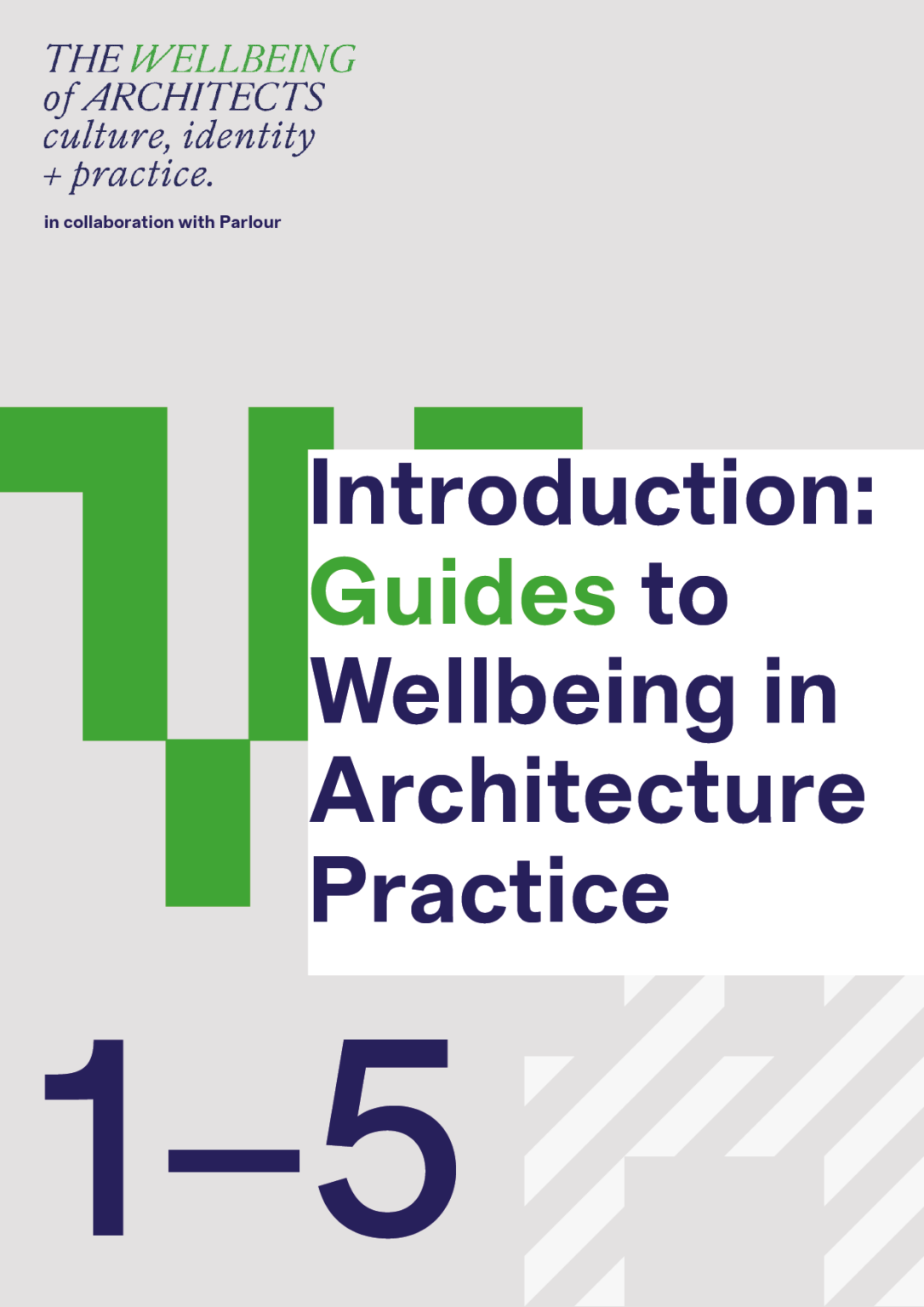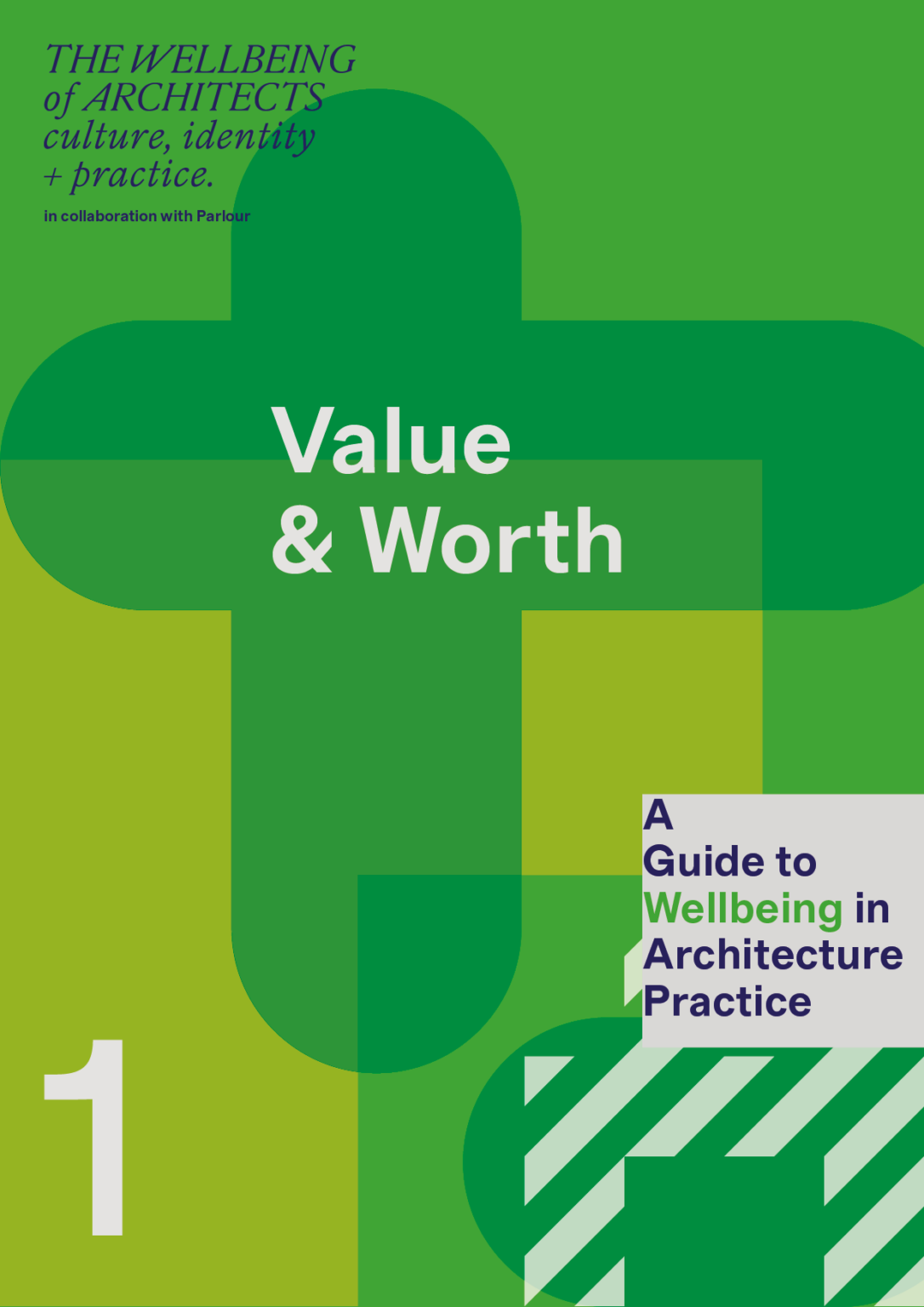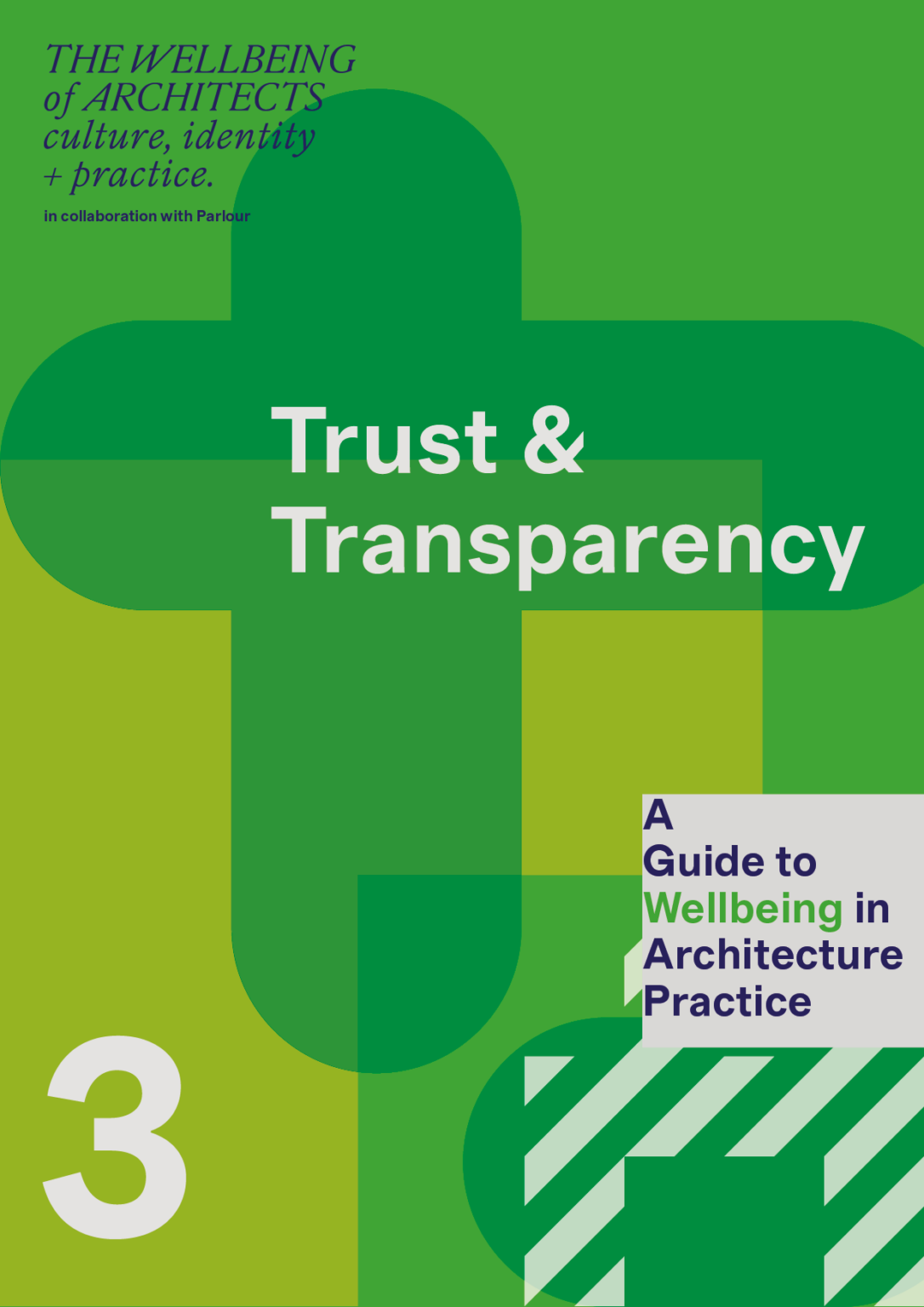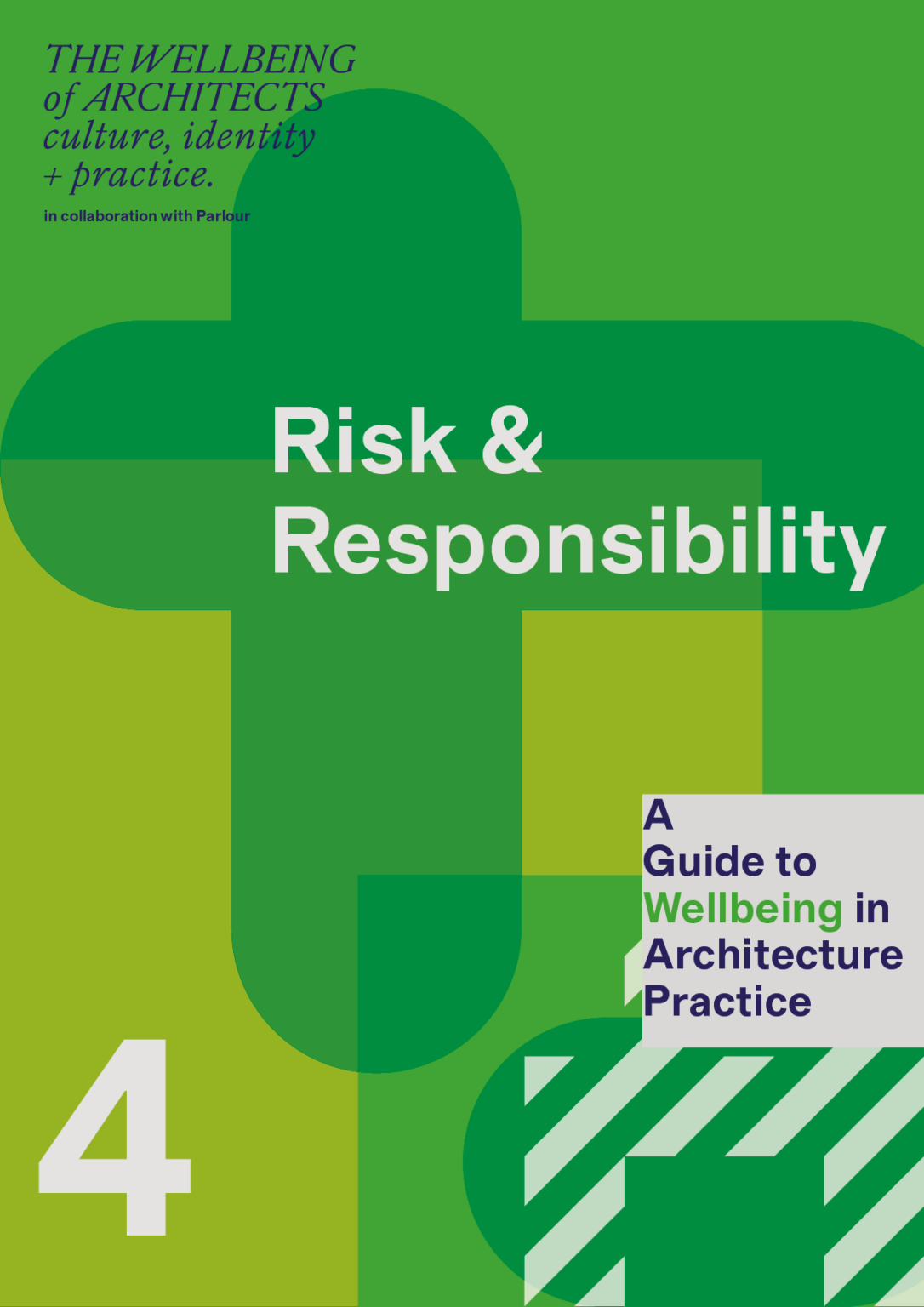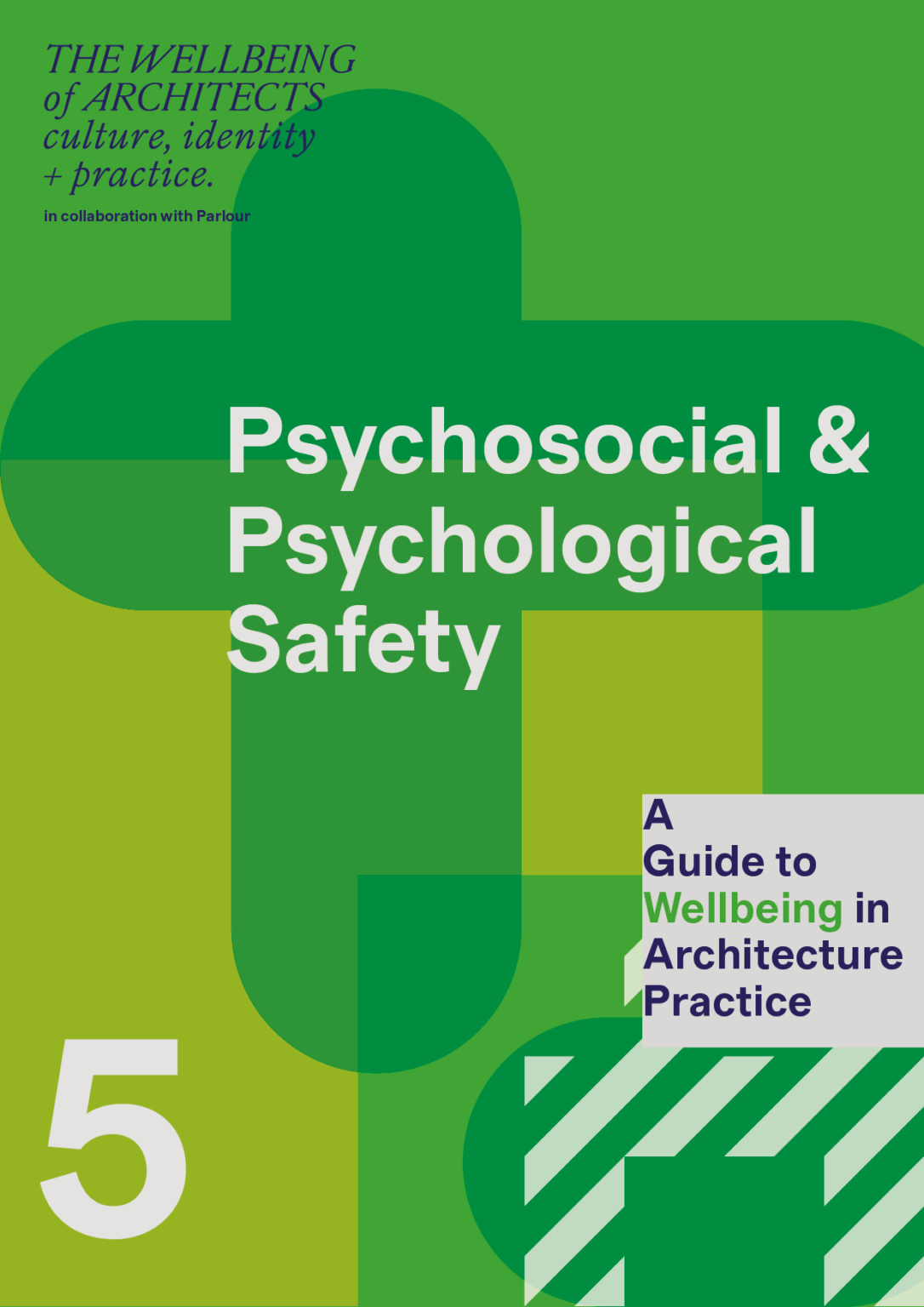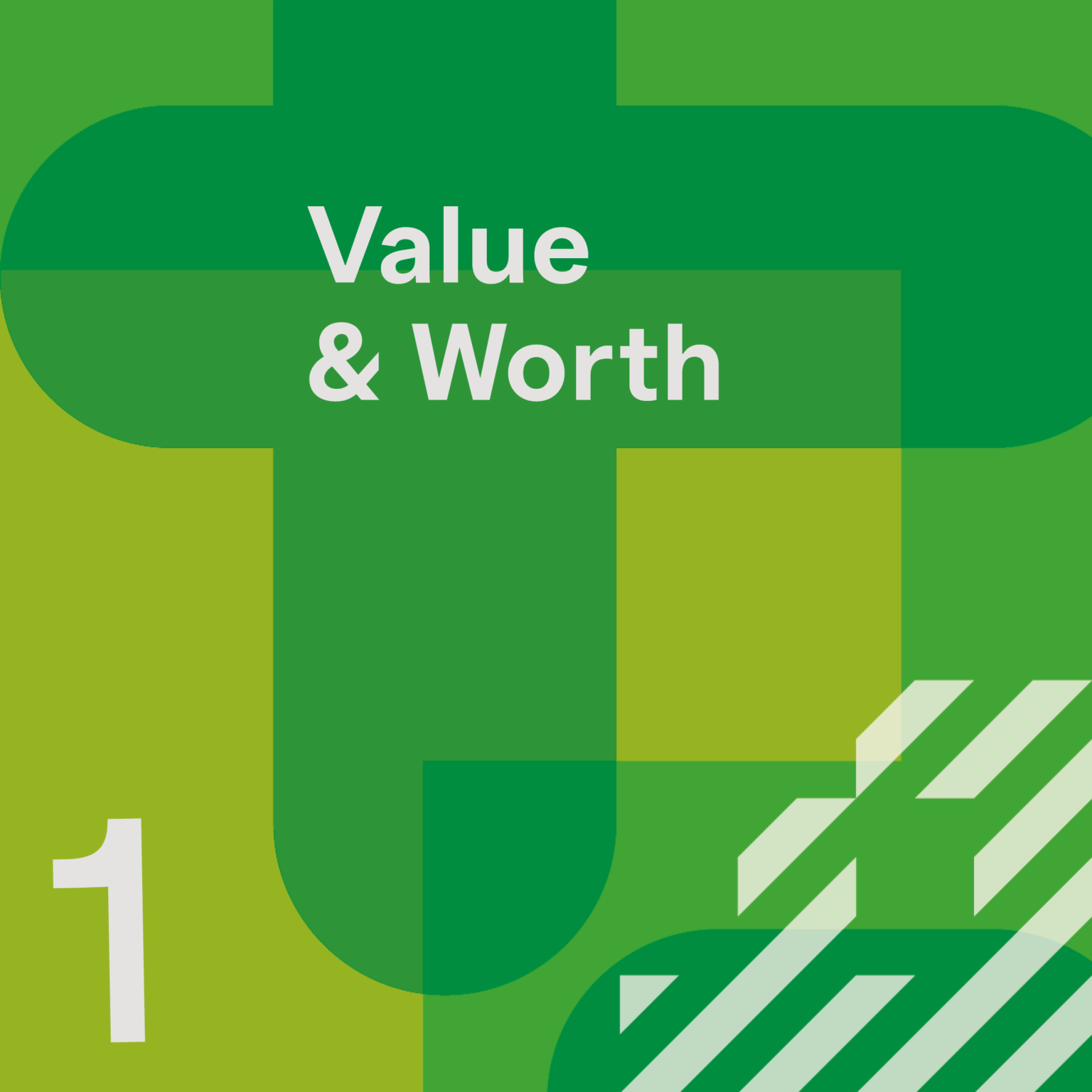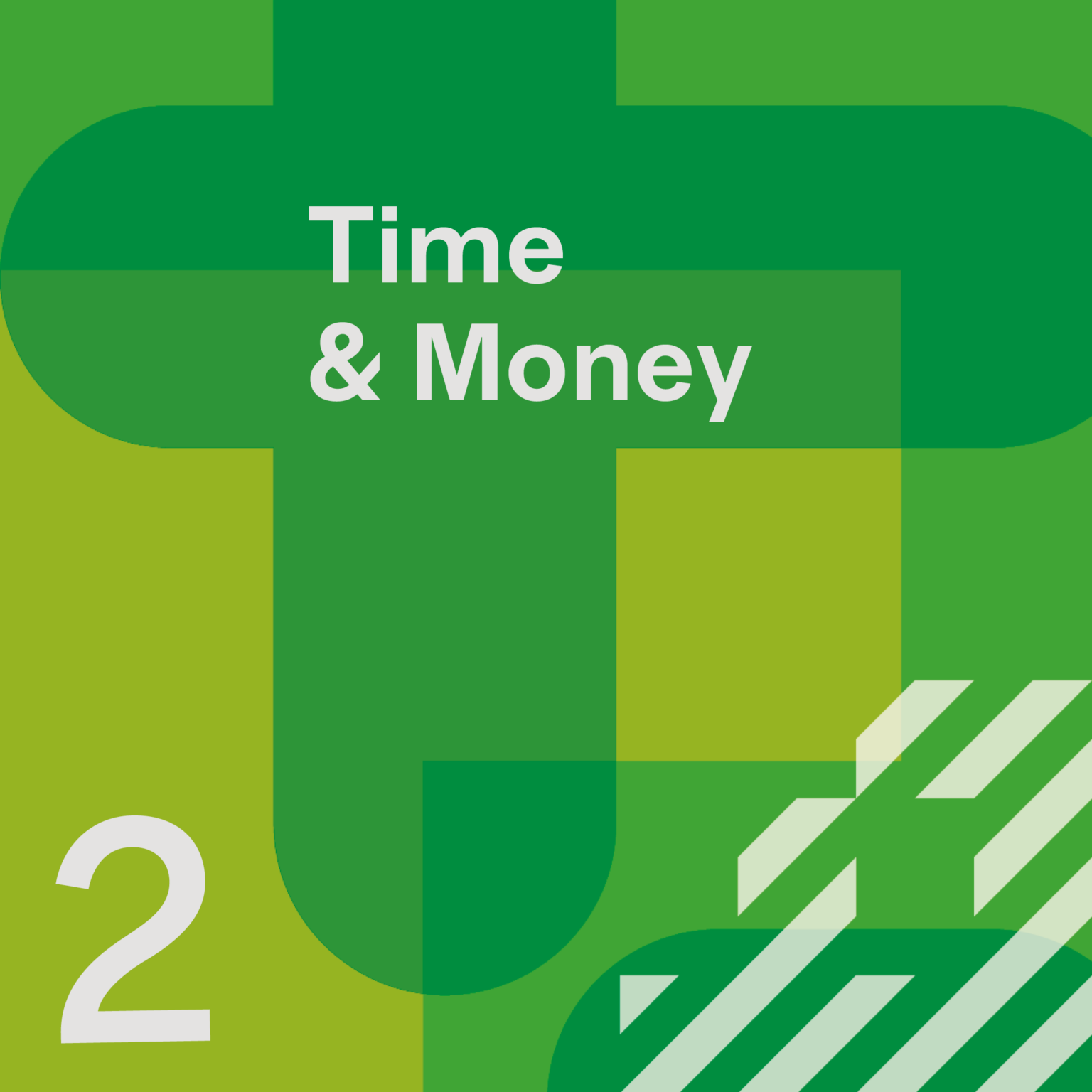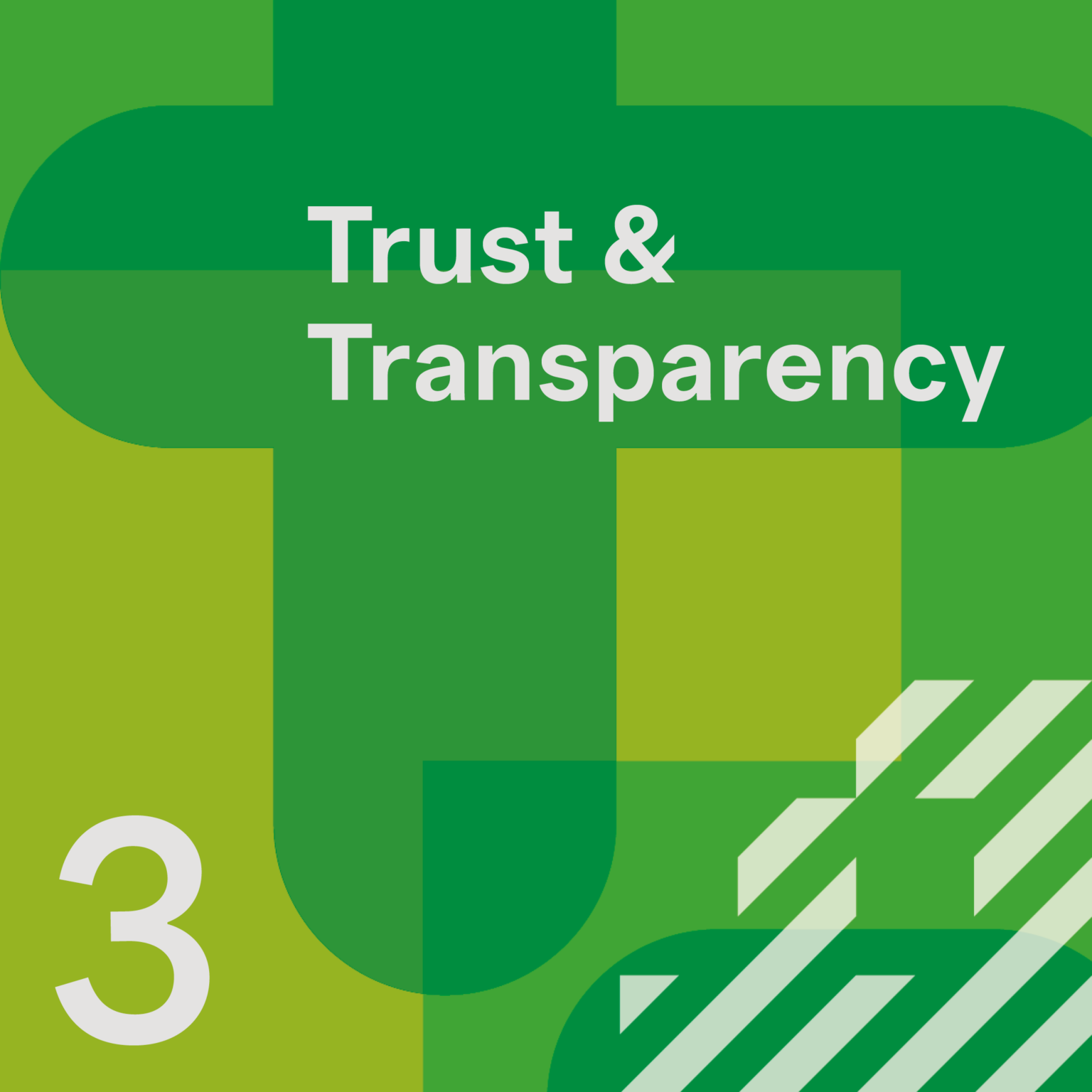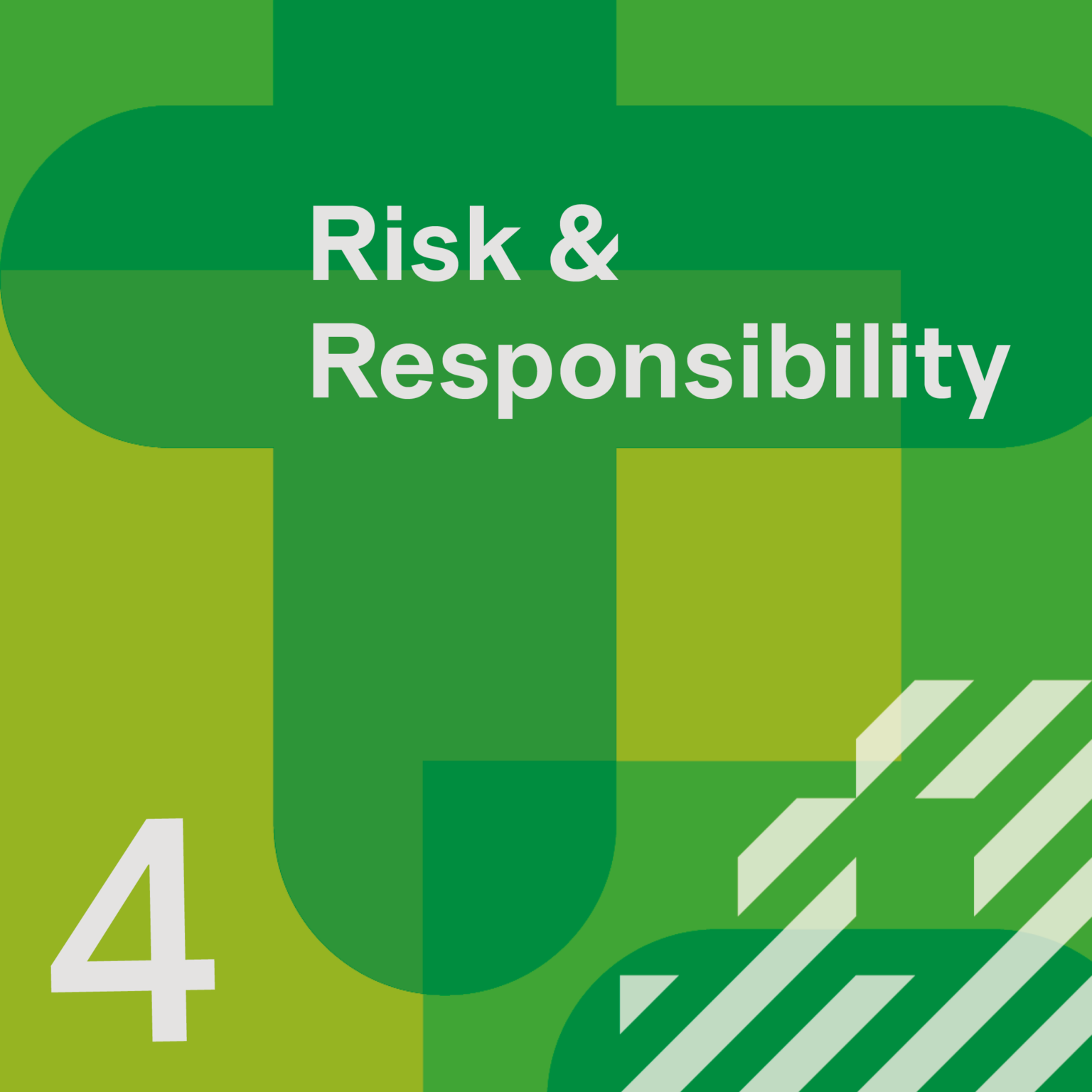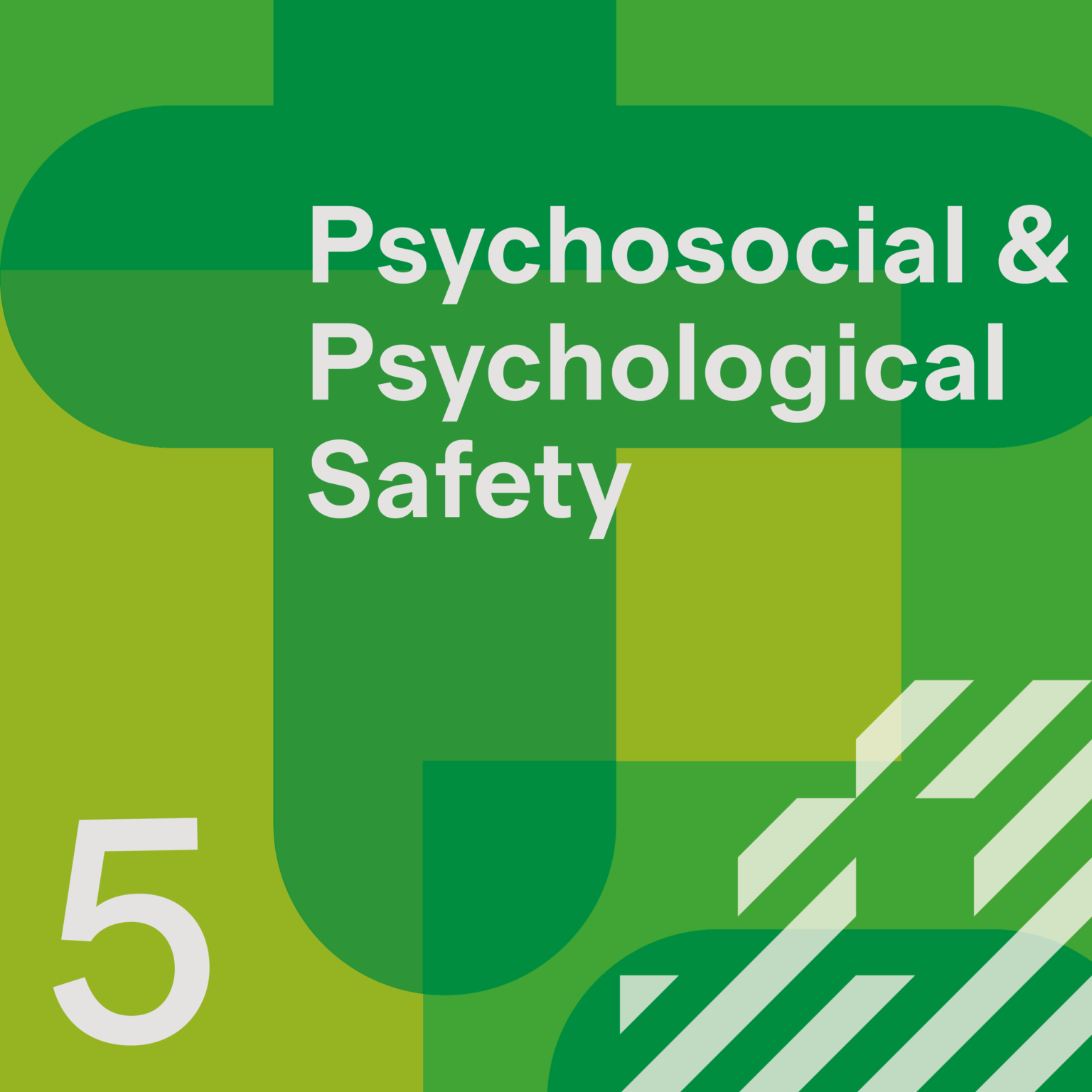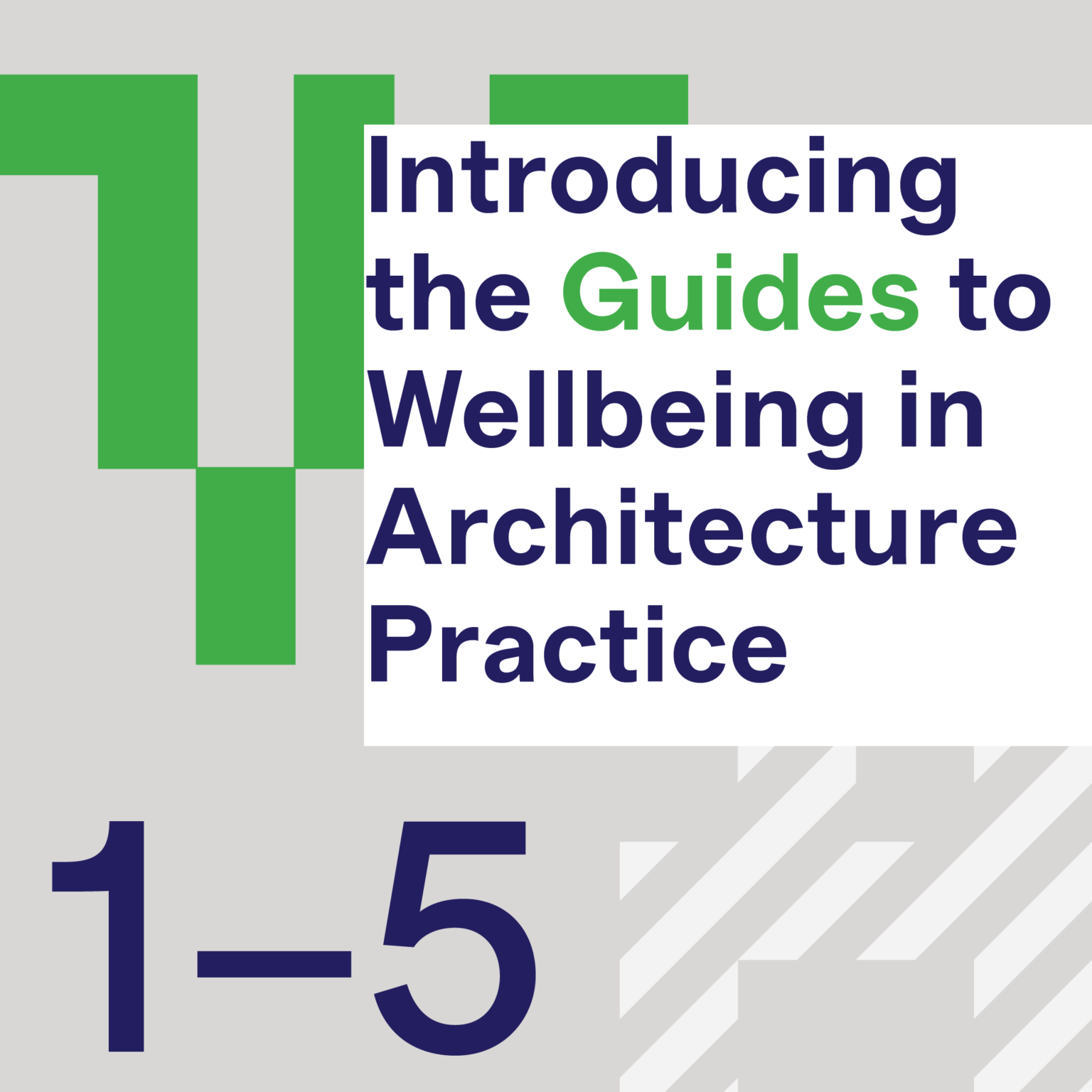Parlour is delighted to publish the Guides to Wellbeing in Architecture Practice, an output of the Wellbeing of Architects research project, and a companion set to the Parlour Guides to Equitable Practice.
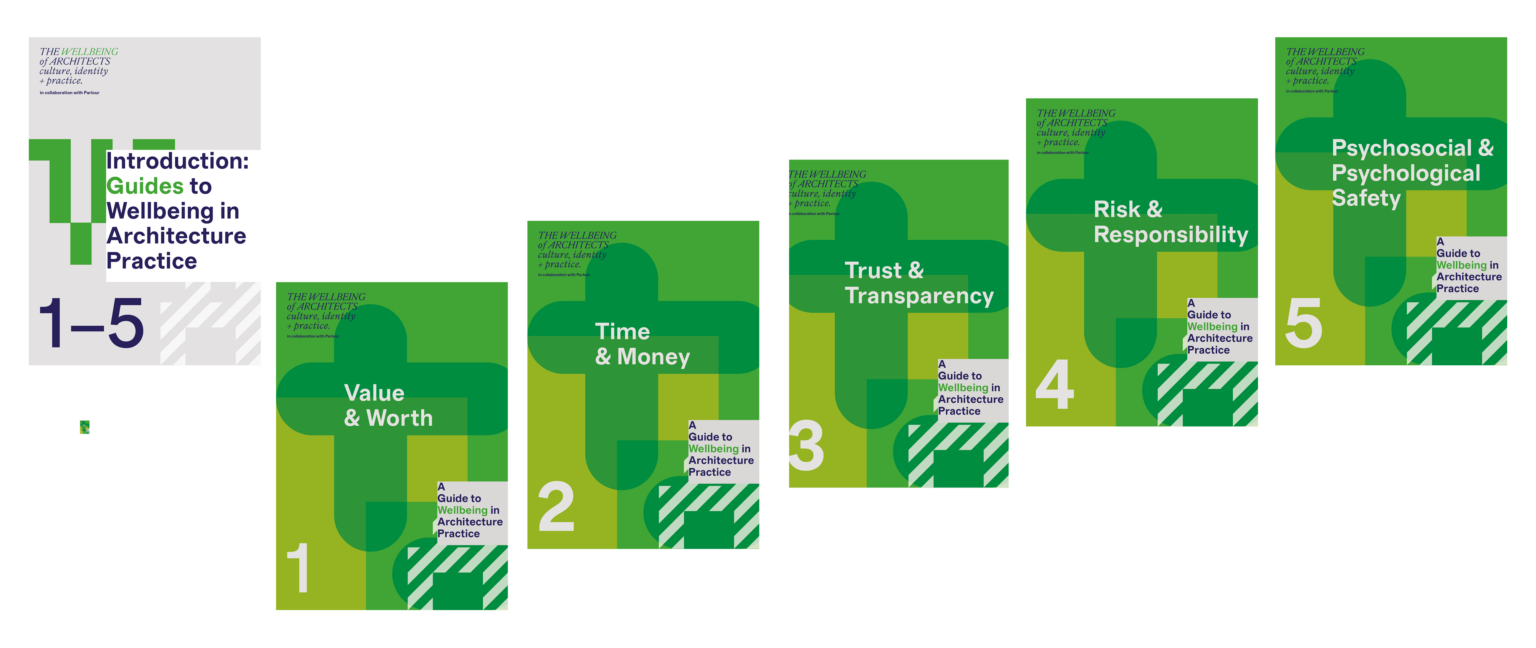
The Guides address five interrelated areas that impact wellbeing at work, as identified through the Wellbeing of Architects research project. Together, they seek to support healthier workplaces and work environments. This is crucial to the future of the architecture as a viable, attractive and fulfilling career, a sustainable, robust profession, and for realising the benefit that architecture services can bring to communities.
The work of architecture is demanding. Indeed, this is part of the satisfaction of working in the profession; a challenging job done well, as part of a team, working for the good of others, can be a deeply fulfilling experience. Many people report that the intensity of the work, its requirement for complex problem-solving, and its potential to bring positive change, is why they are so committed to the profession and its ideals.
When the work of architecture is going well, it’s highly rewarding. But over time, intensity can lead to exhaustion, complexity can lead to overwhelm, high levels of risk and responsibility without commensurate influence can lead to distress. The pleasures of architecture practice are inherently entangled with risks for mental wellbeing, which can be either ameliorated or exacerbated by particular work cultures, norms and contexts.
Many practitioners work long hours, with repeated tight deadlines and high stress, often with intense levels of risk and responsibility, sometimes with poor remuneration and recognition, and with varying degrees of support. Together, this can lead to burnout, cynicism, disengagement, and poor mental health.
This means that the work-related wellbeing of members of the architecture profession is not as good as it could or should be. Reasons for this are complex. Architecture is an old and venerable profession, with a strong sense of community, a well-defined culture, a long history and entrenched traditions and values. But it’s clear that the structures and cultures of architecture practice, and how they play out in some workplaces, along with the downstream effects of problematic procurement practices, also play a serious role in perpetuating poor mental wellbeing.
The Guides to Wellbeing in Architecture Practice aim to equip practitioners, practices and the profession to navigate this situation and facilitate change for the better.
Who are the Guides for?
These Guides are for everyone, at every career stage. They are not just for those experiencing challenges or poor mental wellbeing. People currently flourishing might have ups and downs in future, or have colleagues and friends who need support, or workplaces that could be improved.
Everyone has some agency to make improvements, in some arena – whether large or small. The Guides make recommendations for individuals, practices and organisations. They are designed to provide practical, productive guidance for people at all levels, in all sizes of practice, in management as well as employee roles, and in professional organisations.
How to use the Guides
The Guides can be dipped in and out of, according to current needs and concerns. The structure and conceptual approach is modelled on the Parlour Guides to Equitable Practice. Each Guide begins with an overview of relevant key findings from the Wellbeing of Architects research project, followed by a summary of What is the issue? and a discussion of Why does it matter?
Then comes the call to action – What can we do? This is organised into advice for Practices, Individuals and The Profession. The Guides recognise that each of these groups has different agency and can effect change in different ways. We also believe that it is important for everyone to understand others’ perspectives – we encourage readers to browse all the sections to come to a rounded understanding of the opportunities and the challenges.
Each Guide also sets out key Rights and Responsibilities and provides recommended resource and further reading.
Download the guides
The Guides to Wellbeing in Architecture Practice are an outcome of the Wellbeing of Architects research project. They were published by Parlour in May 2024.
Primary authors for the Guides are Susie Ashworth and Alison McFadyen. Naomi Stead wrote the Introduction and Justine Clark completed the final text for the Value & Worth guide. The Guides are edited by Susie Ashworth, with input from Justine Clark, Naomi Stead, Kirsten Orr and Maryam Gusheh. The project was managed by Alison McFadyen, with additional writing and research by Byron Kinnaird, Naomi Stead, Liz Battiston and Vicki Leibowitz. Full credits are available in the Guide acknowledgements.
Read the full set of guide articles
DISCLAIMER These guides provide overviews only, with prompts for thought and ideas for consideration. They are not a substitute for professional or legal advice.
Individuals and practices should seek advice regarding policy on wellbeing, employment and human resources, as well as advice about particular situations, from their legal, HR or other business adviser. Like the other guides in this series, this does not offer medical opinion, diagnosis or advice – individuals should consult their health professional as appropriate.







